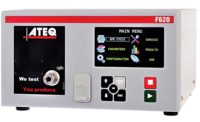The story I am going to relate is true. However, since it is not very flattering, it has been sanitized to prevent finger-pointing. I’m telling this story because you may find yourself in the same circumstances when managing your supply chain, especially one distributed across the globe.
Before I go further, I should note that automotive industry largely follows the Advanced Product Quality Planning (APQP) standard from the Automotive Industry Action Group. This standard provides a framework for developing and setting up a manufacturing process. Included in the APQP is a production part approval process (PPAP), which is designed to demonstrate that a supplier has developed its design and production process to meet the customer’s requirements.
In this story, the supplier is in Asia, and the customers are in the United States and Canada. The supplier ships finished parts by boat, a six-week trip. The story starts with one part in production and a new version of that part in the queue. The part is actually a collection of part numbers supplied to two brands, or divisions, within a larger corporation. Brand 1’s parts had already gone through the approval process. Brand 2’s had not.
One of the last things a supplier does before starting full production is a run-at-rate. The purpose of a run-at-rate is to verify that a supplier’s manufacturing process will meet customer requirements for quality and production volume. A run-at-rate uses production materials and processes, at the rate of full production, but it might only produce, for example, two days’ worth of parts.
Some parts from the run-at-rate will be audited by the supplier, and some will be shipped to the customer for initial sample approval (ISA). The ISA consists of dimensional checks of the parts and a review of their functionality and performance. If the samples pass the ISA, the customer signs off via a part submission warrant (PSW), and the supplier can begin shipping parts to the customer’s production facility.
Out of a production run of 300 parts, three were sent to Brand 2 for the ISA, and three remained at the supplier for review. The remaining 294 parts were sent—prematurely—to the supplier’s warehouse in the U.S.
After some time, Brand 2 reviewed the sample parts and found a defect. The defect was not visually observable. It was a functionality issue, the result of a difference between this part number and another version of the product for Brand 1. The previously shipped parts now had to be found and quarantined before the supplier could make and ship a new set of sample parts and, ultimately, production parts. To complicate matters, the supplier closed the warehouse where the parts had originally been kept and moved them to another warehouse.
If the parts could not be recovered, the supplier’s engineers would be unable to ascertain the nature of the defect via root cause analysis (RCA). What’s more, it would be almost impossible to differentiate the defective parts from the next set of run-at-rate parts without creating another set of part numbers. This would add cost, time and logistical complications. Even worse, if the defective parts were somehow used in the final product, it would result in costly and time-consuming rework by the customer and would adversely affect the customer’s perception of the supplier’s capability.
Since locating and returning the defective parts was taking too much time, the customer shipped its set of ISA parts back to the supplier for RCA.
After RCA and corrective action, the supplier performed another run-at-rate, and samples of these parts were sent to the customer for ISA along with a renewed PSW for sign off. Thankfully, the new batch was approved, and the parts were put into production. (After several weeks, the defective parts were found, sequestered and shipped back to the supplier for rework.)
This was a costly exercise that need not have happened. A significant amount of time and money was wasted locating parts, shipping parts back and forth, reworking parts, and performing the run-at-rate twice.
Had the APQP process been followed as designed, this extra effort would not have been required. The parts would not have been shipped until after the ISA and PSW sign-off. Failing the ISA would have generated an immediate RCA effort, and the problem could have been corrected before parts were shipped in bulk to the warehouse.
Tracking the parts from one warehouse to another was challenging, amounting to perhaps weeks of effort. The supplier’s disparate software systems did not help, and the problem was exacerbated by the reassignment or release of the staff at the original warehouse. Consolidation of the company’s material handling systems would have helped to reduce the effort in tracking the parts.
Supply chains are often distributed across the world, and they take effort to correct when disrupted. It’s important to maintain quality products in the supply chain and to not allow defects to propagate. Once defective parts are out in the supply chain, care must be taken not to mix them with good parts of the same number. When there are defective parts in a batch, that batch must be quarantined and not allowed to comingle with good parts.



